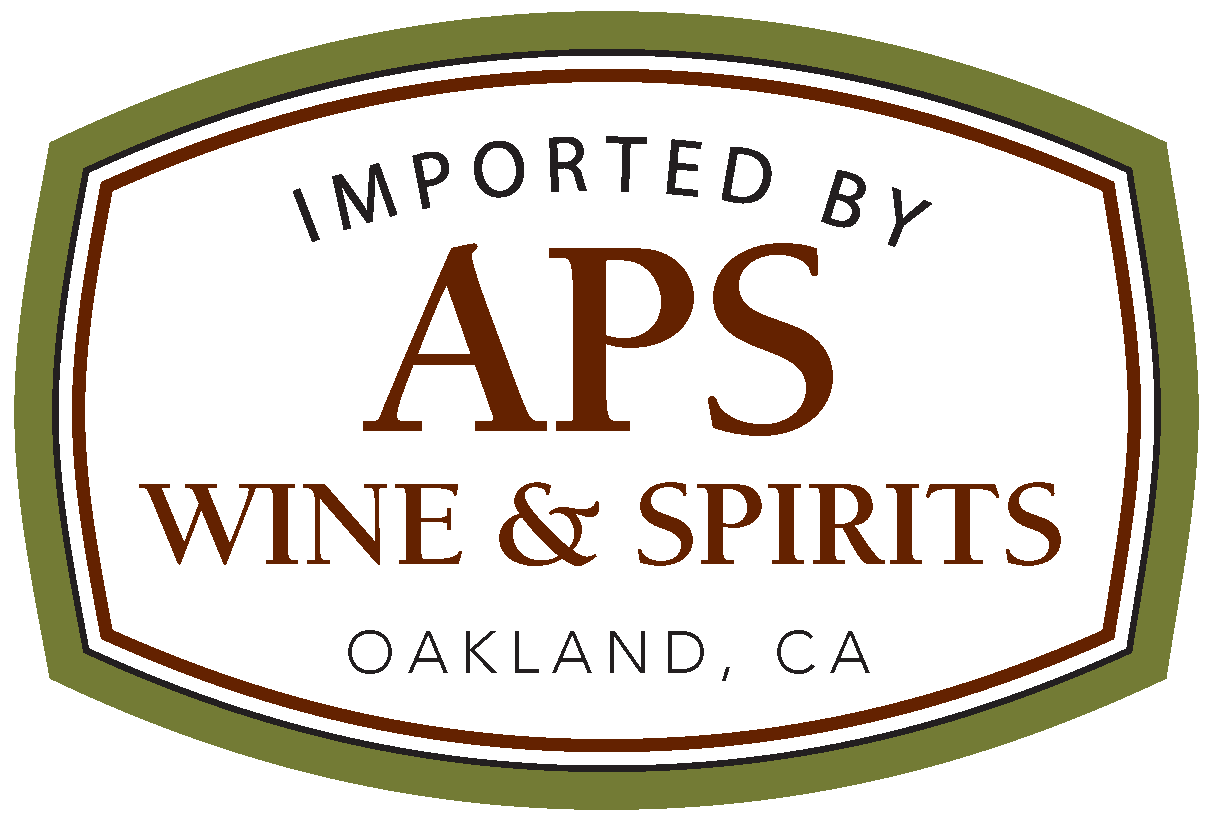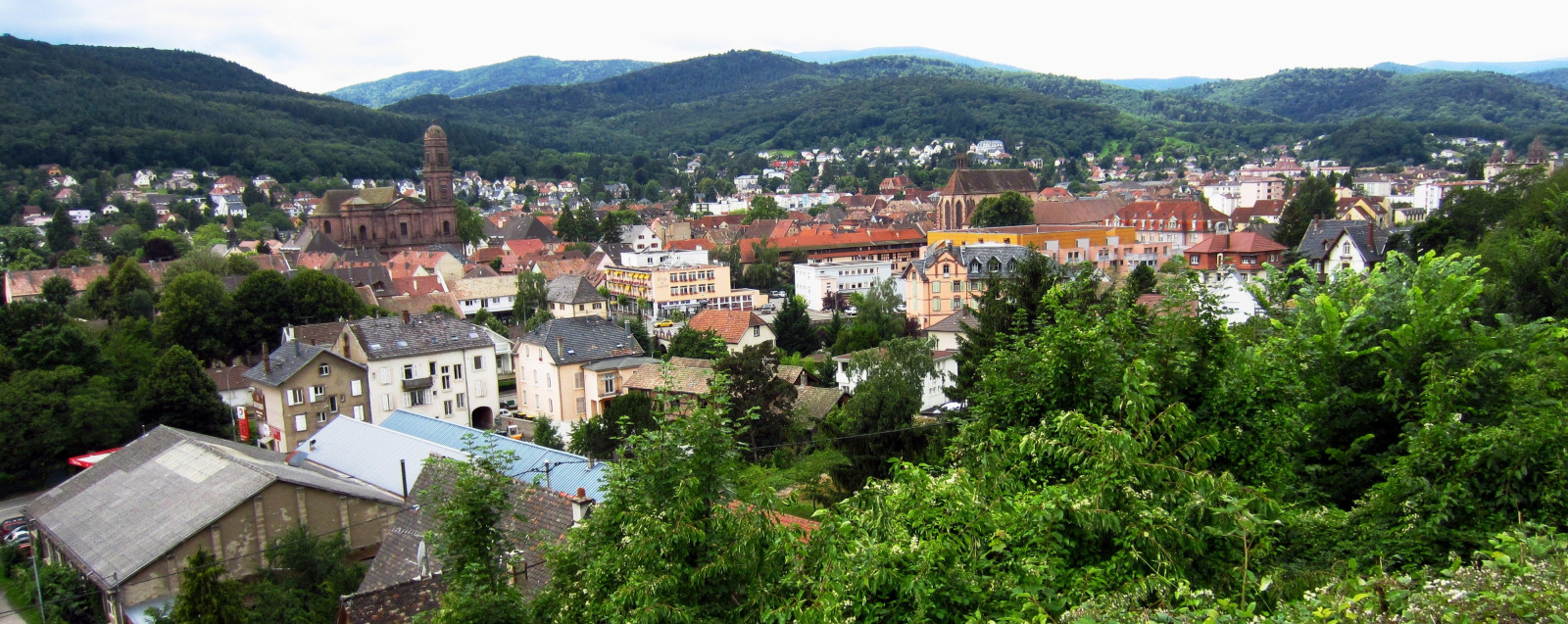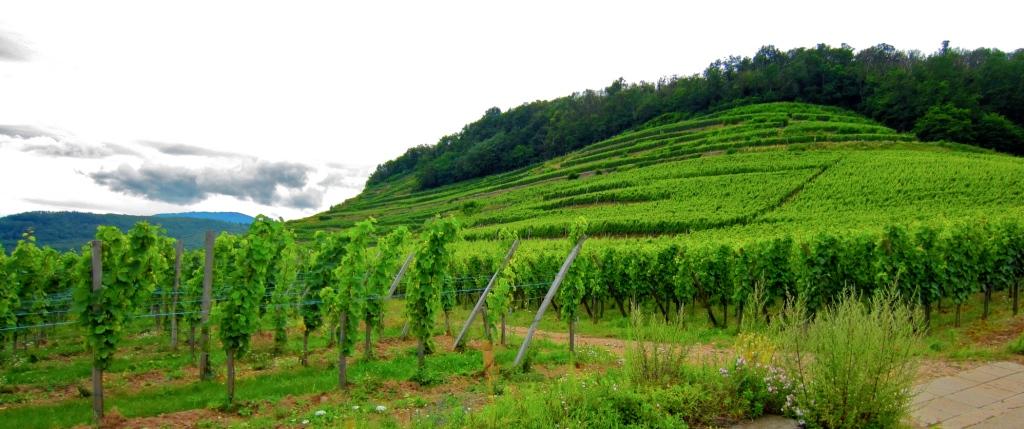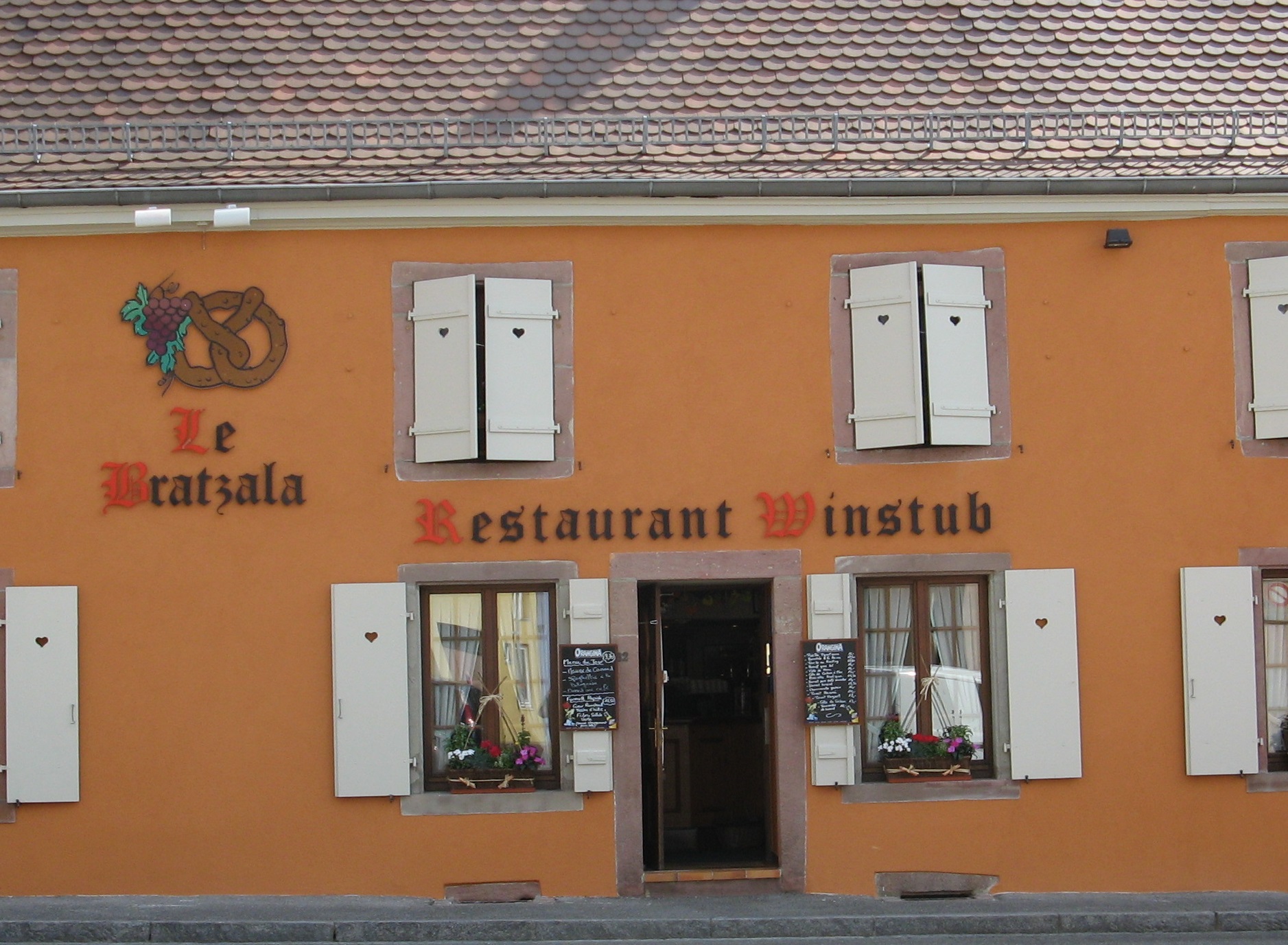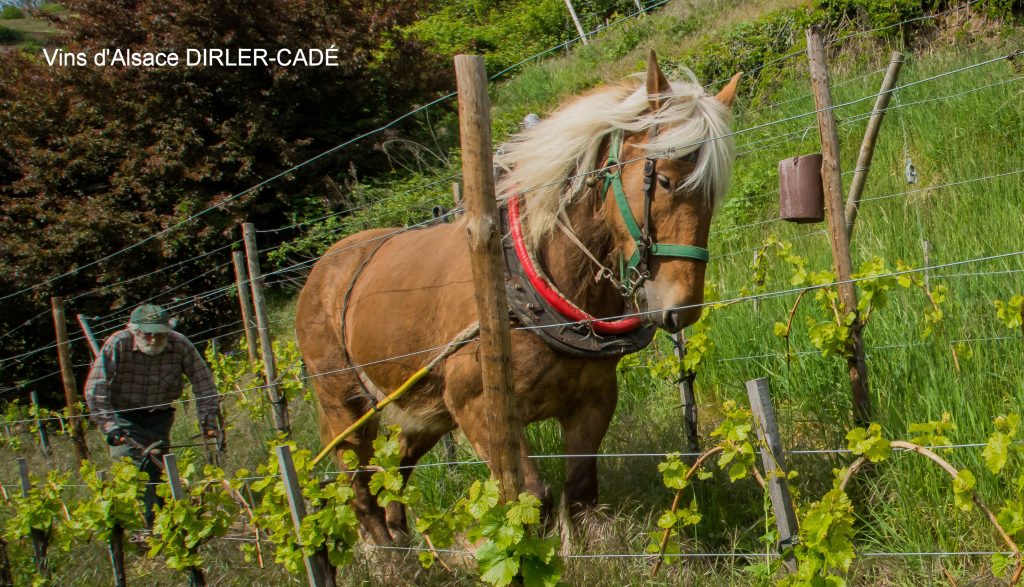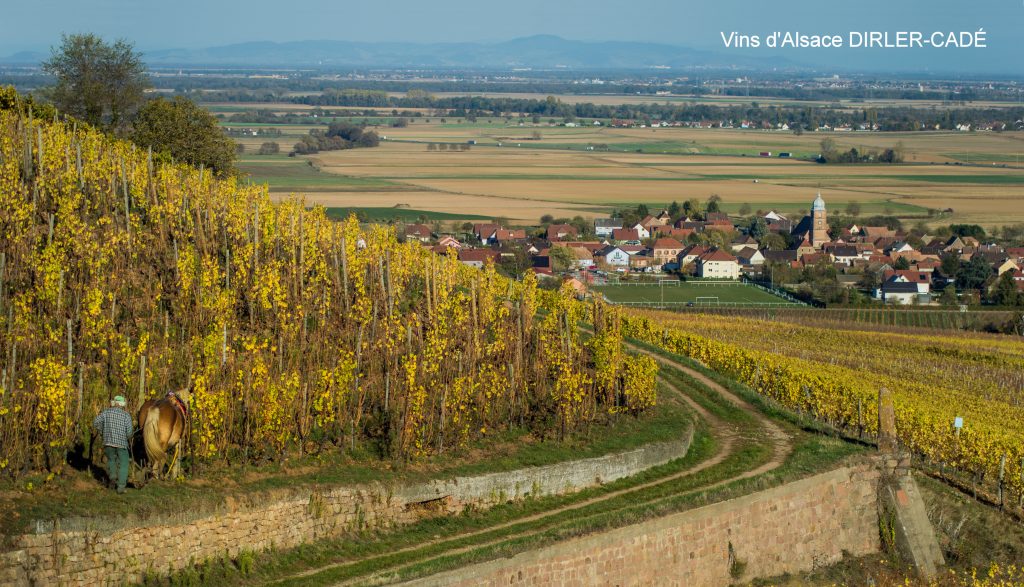SOVEREIGN STATE OF GREEN
THE PEOPLE OF THE SOIL IN BERGHOLTZ
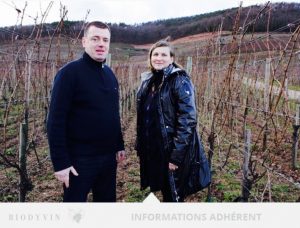
In a region where producers have frequently shifted their winemaking philosophies, it is challenging for wine drinkers to put their “stamp of approval” on a tall and skinny bottle of Riesling or Pinot Gris. Standing apart from a flurry of styles, Dirler-Cadé is steadfast, committed to their land and winemaking since 1871.
The Dirler-Cadés are people of the soil, owners and caretakers of 44 hectares planted to every permitted varietal in Alsace, except Chardonnay. Even though Riesling is their cornerstone, their ability to produce an accordion of styles is their identity (they are a symphony, not a soloist). When Jean Dirler started the family business in Bergholtz, the Dirlers were vignerons as well as courtiers. One of their early accomplishments was the successful production of sparkling wine. Unbeknownst to many, they are the innovators of Crémant d’Alsace, a category now familiar on American wine lists. As generations passed, the family dissolved their courtier business to become solely vignerons. In 1998, their gallery of terroir grew when Jean-Pierre Dirler’s son, Jean, married Léon Hell-Cadé’s daughter, Ludivine. Now, almost half of their vines are Grand Cru status, an impressive inventory for any French winemaker. 1998 also marked the year when Dirler-Cadé became a member of The Syndicat International des Vignerons en Culture Bio-Dynamique, the body that issues the official Biodyvin approval. Founded in 1995, the member list tallies just over 100 properties in Europe. The Dirler-Cadé family was one of the earliest members, along with Domaine Leflaive, Domaine Pierre Morey, François Chidaine, Maison Chapoutier, Zind-Humbrecht, and Marc Kreydenweiss. In an era where “natural wine” induces conversation, Dirler-Cadé speaks clairvoyantly. Their meticulous bio-dynamic treatment in the vineyard perfectly juxtaposes their “let it be” way in the cellar. Jean and Ludivine allow the soil and the vintage to dictate the style. In years when fermentation naturally stops, leaving residual sugar, the Dirler-Cadés do not intervene. The wines are genuinely dry, but a little shift in residual sugar (sometimes up or down) merits their homegrown philosophy, never sacrificing their standards to satisfy a fickle palate or vogue.
As a result of their resources and green hands, their measure of Riesling is extraordinary. A Riesling lover can drink Dirler-Cadé wines for decades, continually engaged by individual expressions of terroir and vintage. The Grand Cru sites of Saering and Spiegel give wines that are more transparent and laser-like, while the Grand Crus of Kessler and Kitterlé emphasize warmth and circular shape. If Riesling was the only grape Dirler-Cadé produced, we would still be writing. But perhaps, their most telling achievement is their collection of estate and lieu-dit wines, which are spirited and varietally spot-on. A textbook and textured Pinot Blanc Réserve is the revolving door to old-vine Sylvaner and Pinot Gris from the hillside lieu dit of Schimberg. And of course, this Alsace family would not be Dirler nor Cadé without their original cuvée, the enduring Crémant d’Alsace.
From the pioneers of Crémant d’Alsace, this cuvée is 60% Pinot Gris and 40% Auxerrois, quickly pressed and fermented in steel at cool temperatures. Made by the Champagne method, the wine rests on its lees for 30 months. Rich, fruit forward, and balanced with nerve and acidity. Powerful, yet elegant with a petit bisou of salmon color in the glass from the quickly-pressed Pinot Gris. Miniscule residual sugar at 0.6 g/liter.
A Sylvaner lover’s dream come true. From the Heisse Wanne block of the Grand Cru Kessler that the Dirler’s planted in 1957. The wine is whole cluster pressed, then fermented and matured in foudres for 10 months, bottled unfined with light filtration. Straw-green, quince and pear laced with minerality. Delicious.
The Dirler-Cadés source their Pinot Blanc for us exclusively from a block of vines dating to 1965 in the Bollenberg lieu-dit, a marl and sandstone site overlooking the town of Orschwihr. This site stands apart from the Vosges mountains, benefiting from sun, wind and elevation. The wine is bottled quickly, to preserve that distinct sandstone minerality, spice and orchard fruit quality of old-vine Pinot Blanc. Finishes dry and brisk. On the vast plains of Pinot Blancs this is an oasis.
100% Muscat Ottonel from the Grand Crus Saering and Spiegel. Look for notes of kumquat, fresh cream, orange rind and white flowers; the finish is long, lively and juicy, with a very good balance. As always, zero acidification and zero malolactic.
The vineyard here runs up the slope of a rather impressive hill alongside Kitterle and Saering, and provides a warm spot where Riesling thrives. Never too hot, the fruit ripens evenly with a long “hang time.” One finds here generous minerality, citrus-flint aromatics and intriguing florals. There is depth of flavor and balanced, striking acidity. And of course, it is delightfully dry and untouched by wood.
Gewurztraminer from Bux and Kitterle. Wow! Lovely perfumes of gardenia, pink roses and baked apple pour from the glass, while the palate offers spicy notes of gingerbread and winter evergreen. Balanced acidity and taut minerality make for a trés classic Gewurztraminer.
Rarely seen in the US, 2019 marks the return of this special volcanic site, tucked in between the Grand Crus of Kessler and Spiegel. The wine is whole cluster pressed, then fermented and matured in foudres for 10 months, bottled unfined with light filtration. Vivid yellow gold, peach and “tabac blonde” woven together with whispers of beeswax and “epicees.” Textbook.
Purity and subtlety characterize this wine. Complex aromas combining lemony fruitiness and subtle nuances of anise, verbena and lemon balm – frank and straight attack. Real “vin de cuisine.” Riesling = “mirror.” Come see why Spiegel is Jean’s prized Riesling.
This bowl-shaped, terraced vineyard of reddish, iron-rich sandy clay soil is a natural suntrap that grape vines love, especially Pinot Gris. In cooler years like 2019, it’s shelter and warmth allow the fruit to ripen slowly and evenly, just one of the many reasons Kessler has long been recognized as Grand Cru. The name Kessler, in fact, comes from the German word for cauldron and the vineyard has been known by this name since the 14th century. The Dirler-Cadé Pinot Gris here is a special breed with smaller berries and thicker skins. The wine is expansive in every direction. Its high-toned aromas mirror the intensity of a late harvest wine. The palate blazes with honeyed minerals, a peachy “fruit cocktail” and a variety of asian spices, while all is kept in balance with finely etched acidity.
The Kitterlé vineyard is a monument to “sense of place,” the vines formed by a sharp overhang shaped by strong, reinforced walls. It is sunny from dusk to dawn with lean and sandy soil that produces exceptional Gewurztraminer. This is Gewurztraminer with all the exotic and spicy fruit aromas (lychee, mango, grapefruit) one could hope for with a persistent and rich palate. Opulent structure with fantastic freshness.
Since its inception in 1995, the Syndicat International des Vignerons en Culture Bio-Dynamique (SIVCBD) has had the same message, “nothing added, nothing taken-out, nothing changed.” The seal of approval is called BIODYVIN, which is issued by the SIVCBD. In order to admit an unbiased approval, the Syndicat hires an independent body (Ecocert) to carry-out the thorough inspections. The process is tiresome but fair, and a fussy standard of meaningful. Less than 140 wineries have BIODYVIN approval, here is a list of its first members:
- Marc Kreydenweiss, 1995 (Alsace)
- Château Faltas, 1995 (Bordeaux)
- Domaine Leflaive, 1995 (Burgundy)
- Dirler-Cadé, 1998 (Alsace)
- Zind-Humbrecht, 1998 (Alsace)
- Pierre Morey, 1998 (Burgundy)
- Maison M. Chapoutier, 1998 (Rhône)
- François Chidaine, 1999 (Loire)
- Domaine Montirius, 1999 (Rhône)
http://www.biodyvin.com/en/our-members/167-domaine-dirler-cade.html
